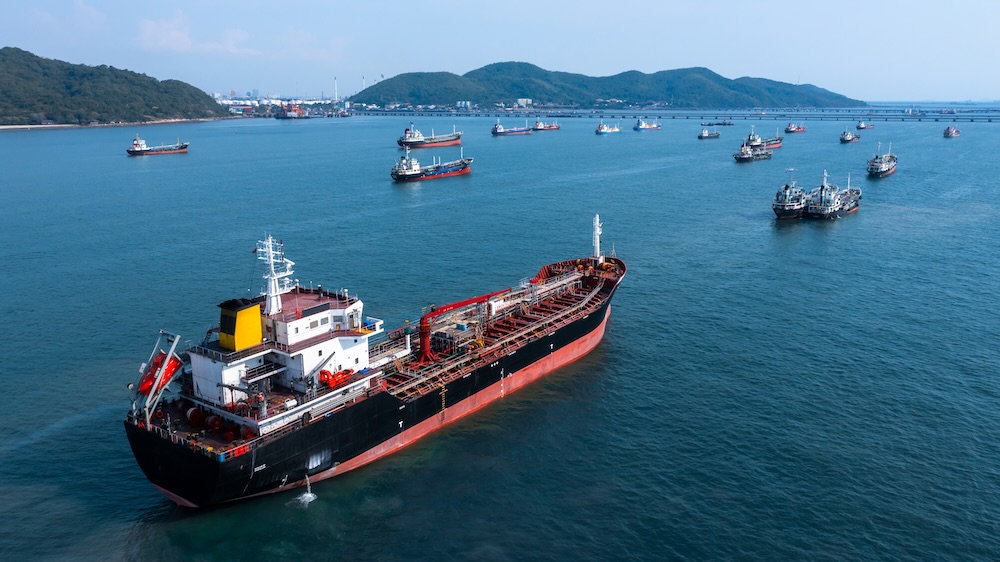The price of Russia’s key Far East crude grade fell this week after Chinese state-owned refiners cancelled part of their seaborne purchases in the wake of new US sanctions on Moscow’s top oil producers.
Spot cargoes of ESPO Blend loading from Russia’s Pacific outlet were offered at about 50 cents per barrel below ICE Brent, traders said, reversing last week’s premium of more than $1 that prevailed before the latest measures. Market participants attributed the swing primarily to reduced buying interest from Chinese state firms following the United States’ designations.
On 22 October, the US Treasury’s Office of Foreign Assets Control (OFAC) imposed full blocking sanctions on Rosneft and Lukoil, alongside a set of general licences allowing limited wind-down activities and certain specified transactions during a transition period. The action broadened the reach of existing restrictions by targeting Russia’s two largest private-sector crude exporters and signalled potential secondary sanctions exposure for counterparties.
The European Union followed on 23 October with its 19th sanctions package, which included a phased ban on Russian LNG and wider financial and trade curbs. EU capitals framed the measures as part of a broader effort to curb the Kremlin’s energy revenues and constrain financing for its war against Ukraine. The additional EU restrictions have reinforced the market’s focus on how cargo flows may be re-routed or delayed.
In China, state-owned companies including Sinopec have cancelled some seaborne Russian crude purchases, mostly ESPO, according to traders and shipbrokers. While pipeline deliveries from Russia to China continue, the near-term pullback by state majors has created slack in the prompt market for Kozmino-loaded parcels, pressuring differentials. Independent “teapot” refiners in Shandong province remain active buyers of sanctioned barrels and may absorb some of the volumes, although their capacity to take additional cargoes is uncertain given credit, storage and quota constraints.
The immediate price reaction reflects the market’s sensitivity to any disruption in ESPO flows. ESPO is favoured in North Asia for its medium, low-sulphur specification and short voyage time to Chinese ports. The grade has frequently commanded a premium to Brent this year on steady Chinese demand and relatively high Middle East official selling prices, but that relationship has flipped in recent days as sanctions have rippled through trading and shipping logistics.
Refiners across Asia are reassessing procurement strategies. In India, which alongside China has become a key outlet for Russian crude since 2022, refiners have paused placing new orders for Russian grades while they seek guidance from suppliers and authorities on compliance with the updated US measures. Trade sources told Reuters that buyers are awaiting clarity on exposure risks before committing to fresh November–December loadings.
The recalibration is already visible in alternative sourcing. Reliance Industries, India’s largest private refiner and Russia’s top Indian customer by volume this year, has stepped up purchases of Middle Eastern and US crude following the US designations, according to Bloomberg reporting and market participants. Shifts by large buyers such as Reliance can tighten regional balances and influence arbitrage flows into Asia.
Beyond outright price moves, the new US and EU measures introduce operational frictions that may persist. OFAC’s general licences set timelines for winding down transactions with Rosneft and Lukoil and carve-outs for specified activities, but banks, insurers and shipowners typically adopt conservative interpretations, which can slow documentation, raise financing costs and complicate tanker employment. Those effects, in turn, can widen delivered-into-China discounts for targeted grades or divert barrels toward more permissive destinations.
Benchmark futures reflected the cross-currents. Brent rallied late last week on concern that buyers would seek alternative barrels, before easing as traders weighed inventory builds and macroeconomic signals. Nevertheless, the forward curve has tightened compared with earlier in October, consistent with a market testing the balance between logistical disruption and demand softness.
For Russia, the combination of Chinese state-sector caution and Indian hesitation narrows its immediate pool of premium Asian buyers. While private Chinese refiners may keep importing discounted Far East grades, sustained state-owned retrenchment would likely force deeper discounts on spot ESPO cargoes or prompt more creative routing and blending strategies. For Asian refiners, the near-term picture points to higher reliance on Middle East and Atlantic Basin supplies, a modest widening of freight spreads, and continued volatility as sanctions compliance decisions work through the system.
Risk in European Waters: The Shadow Fleet, Sanctions Evasion and Safety Gaps


